Located in the small town of Vianden in the north of Luxembourg, just 55 kilometers from the capital Luxembourg City, Vianden Castle is an imposing medieval Romanesque fortification.
Despite its grandeur, the castle was allowed to fall into ruin during the early modern period, before restoration efforts in the 19th and 20th centuries slowly restored the enormous ruin to its former glory.
Today the castle is open to visitors and is an extremely popular and well-reviewed tourist destination.
A Guide to Vianden Castle
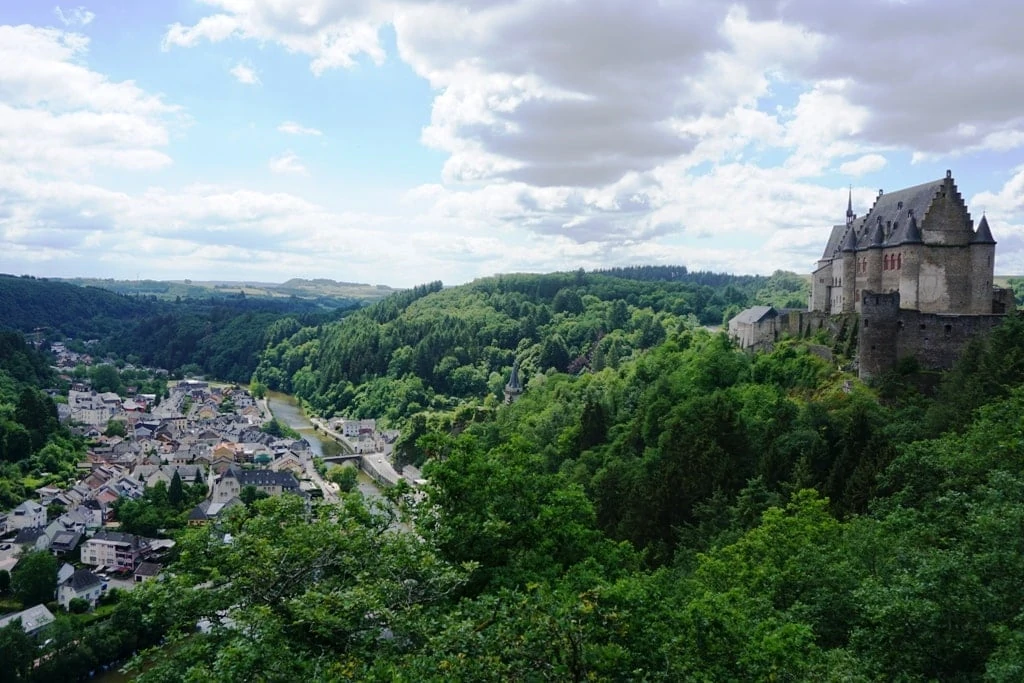
You might also like: The best castles in Luxembourg.
Medieval History of Vianden Castle
Built on a rocky promontory some 310 meters above the town of Vianden and the River Our, Vianden Castle dominates the local landscape. Originally the site of a Roman Castellum (a small fort or tower), the castle began as a square Romanesque keep constructed around the year 1100.
A chapel, kitchen, and residential rooms were also built, suggesting that the site was the home of nobles – indeed, the castle was the seat of the Counts of Vianden from its construction until the 15th century.
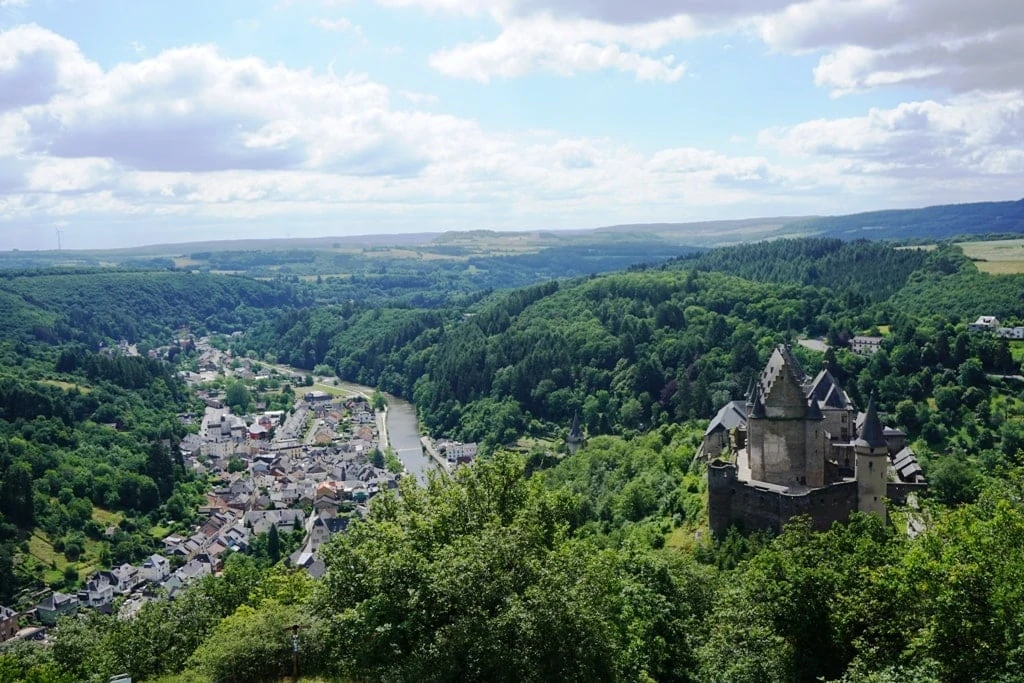
Over the next few centuries, the Counts of Vianden slowly added to their castle, creating an increasingly luxurious home for themselves. In the 12th century, the castle was upgraded, with a residential tower and a decagonal chapel being added.
Then in the early 13th century a large two-story palace was built, measuring ten meters by thirteen meters, complete with a gallery that linked the structure to the castle chapel. Then in the middle of the 13th century, Vianden was renovated in the Gothic style – this change is reflected in the tall, angular roofs and conical towers that can be seen on the castle today.
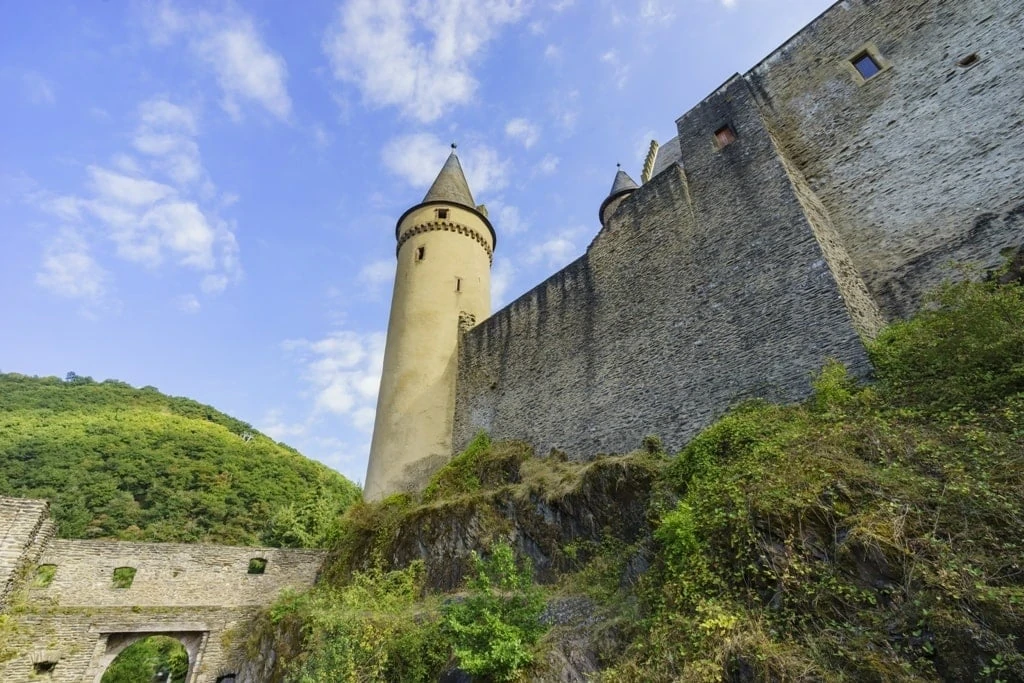
These 13th-century expansions of Vianden Castle imply the importance of the Counts of Vianden at the time. Count Henry I (1220-1250) is known as ‘the Sun Count’, for it was during his reign that the influence of this family reached its height.
Not only was Henry an important nobleman, but his wife Margarete of Courtenay was the daughter of the Latin Emperor of Constantinople, sister in law to the King of Hungary, and cousin of King Philip-Augustus of France.
Many of these fashionable and elaborate additions to the castle were likely built as a political statement, as the Counts of Vianden attempted to outdo the rival House of Luxembourg.
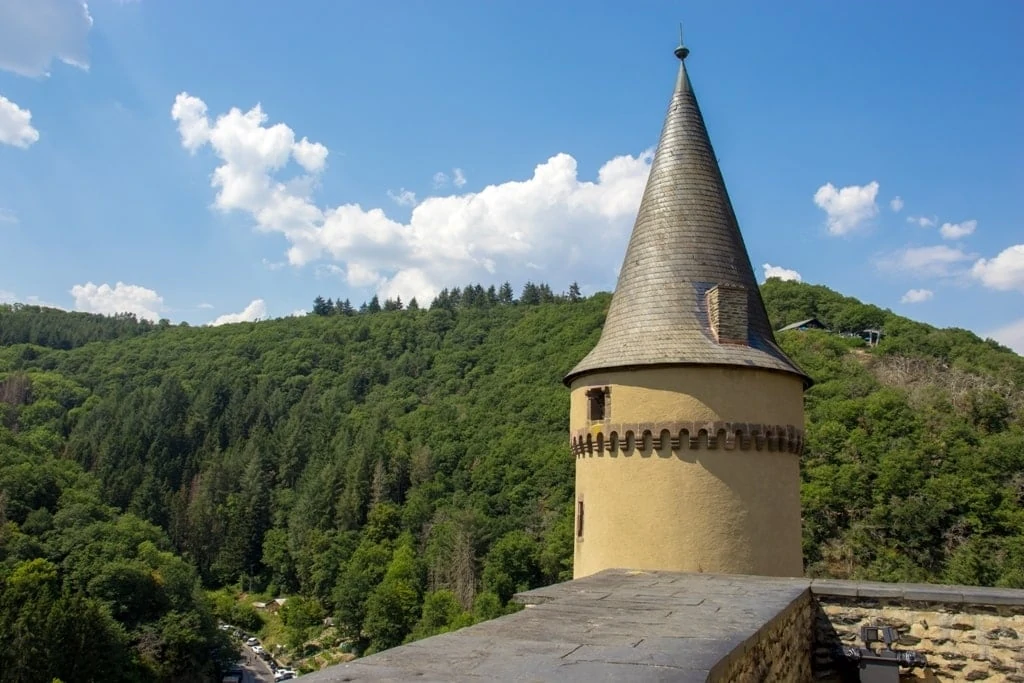
The final construction work on the castle before its abandonment was completed in 1621 on the orders of Prince Maurice of Orange-Nassau-Vianden – a renaissance palace known as the Nassau Manion, with a banqueting hall and bedroom, was built to replace a damaged wing of the original 11th century keep.
Ruin and Restoration of Vianden Castle
During the 16th century, the Counts of Vianden became closely associated with the house of Nassau through marriage – the granddaughter of Henry II of Vianden, Elizabeth, had willed the county and castle of Vianden to her cousin, Count Engelbert of Nassau.
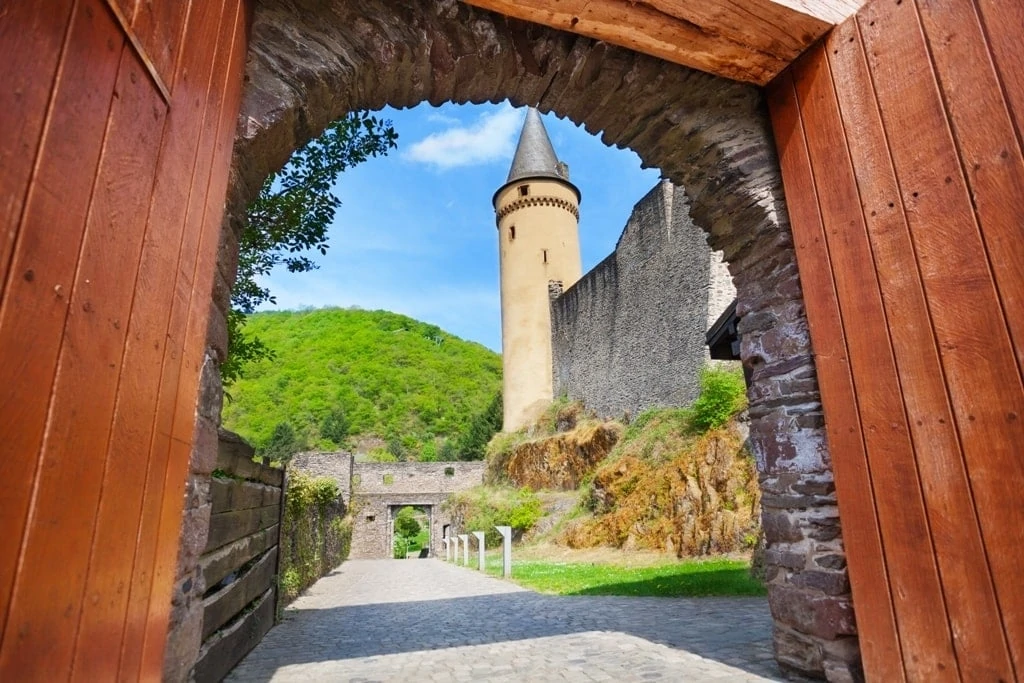
Over the course of the 16th century, the castle at Vianden was gradually abandoned until it was confiscated by Philip II of Spain as part of the Dutch revolt and granted to the governor of Luxembourg, Peter Ernst von Mansfeld.
Vianden castle remained with the house of Nassau until it was sold in 1820 by King William I of the Netherlands to an alderman named Wenzel Coster for 3,200 florins.
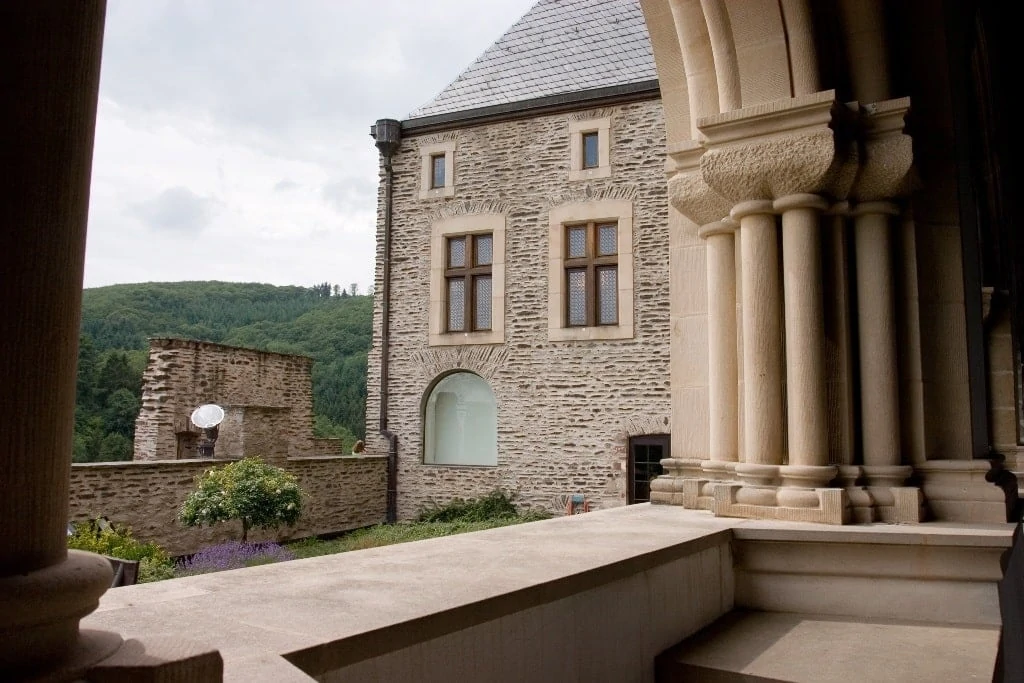
The alderman set about demolishing the castle and selling various parts of it as building materials. There was an outcry at the ignominious fate of Vianden Castle, which was so strong that William actually repurchased the site in 1827 with the intention of restoring the castle.
However, the 1830 Belgian revolution delayed construction efforts, and it was not until 1851 that Prince Henry of the Netherlands succeeded in beginning the restoration in earnest by rebuilding the chapel.
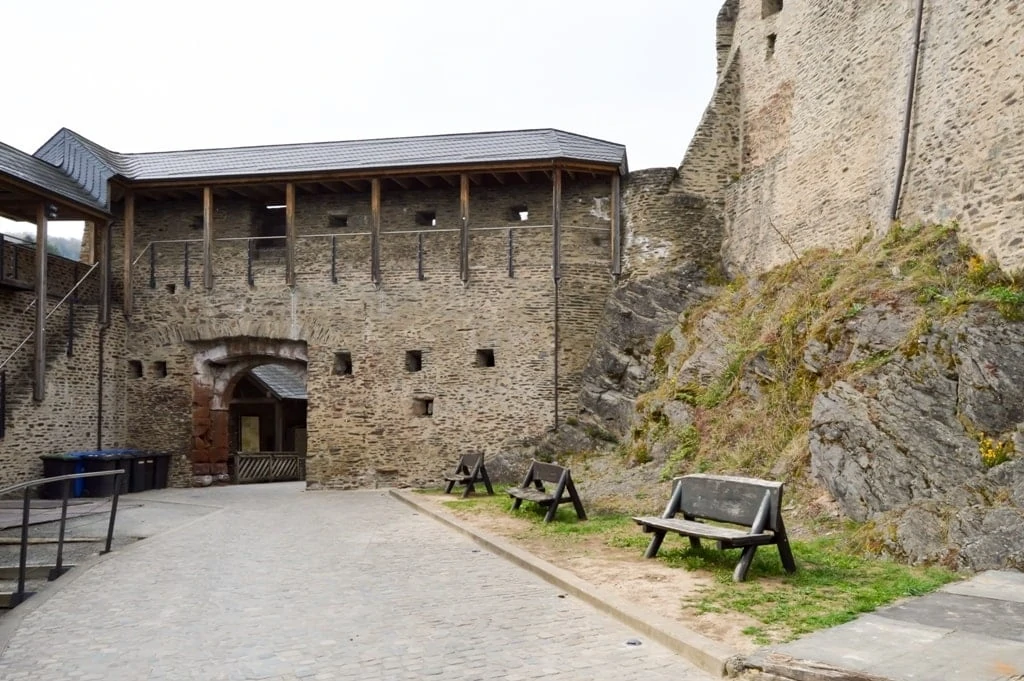
In 1890 Grand Duke of Luxembourg, Adolphe of Nassau-Weilbourg ordered another round of restoration works, which were interrupted by the First World War.
The castle actually saw action during World War Two, when it was defended by members of the Luxembourg resistance against the Nazi Waffen-SS. It was not until long after the war that reconstruction efforts could begin again – in 1964 the armory was rebuilt, while in 1978 and 1979 the roofs and walls were restored.
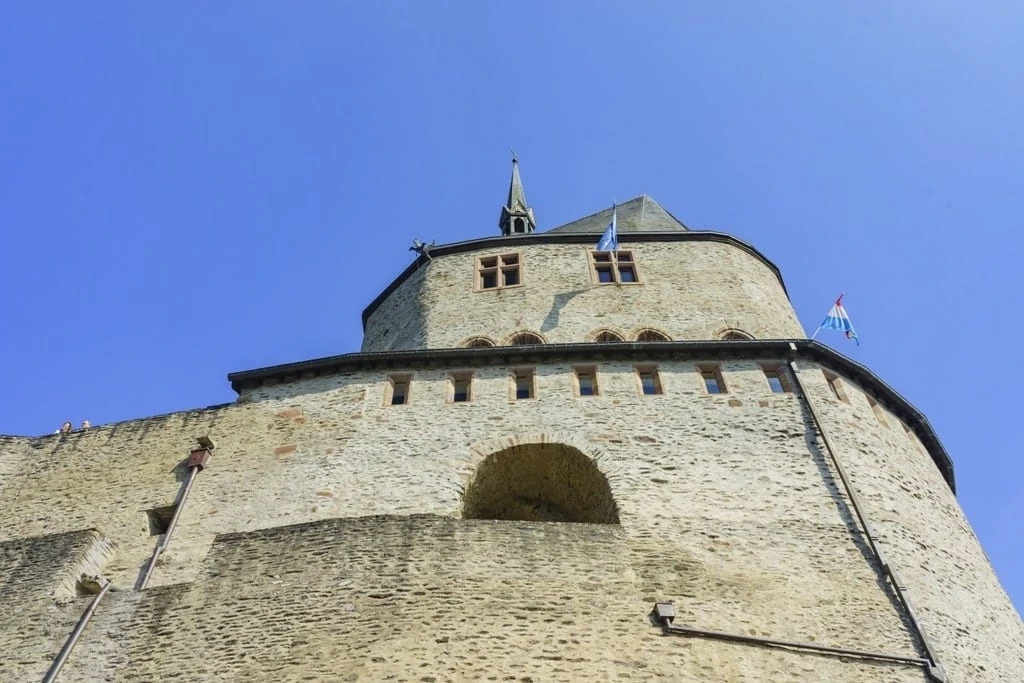
After the Nassau Mansion was completed in 1982, work turned to the interior of the castle, which was authentically recreated. In 1990 the work was finished, and the castle was opened to the public.
Vianden Castle Today
Listed by CNN as one of the 21 most beautiful castles in the world in 2019, Vianden today plays host to the many visitors who come to explore the beautifully restored fortification.
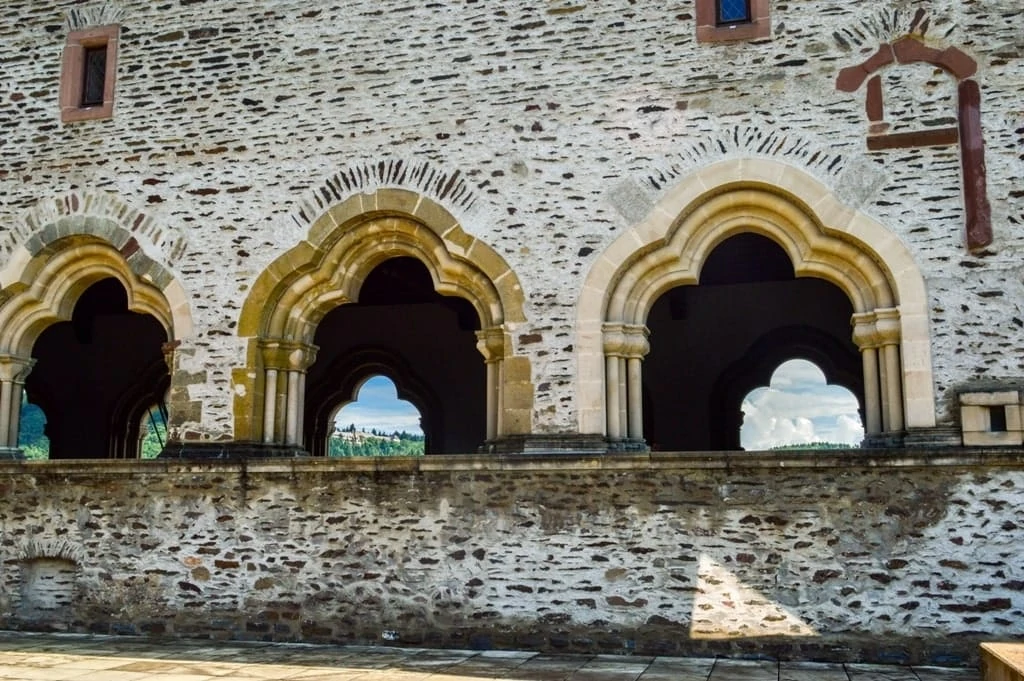
In the outer bailey of the castle stands an information center which houses a permanent exhibition on the history of the castle, as well as archaeological artifacts. The site is also equipped with a shop and taverna, and the castle can even be hired for private events.
Visiting Vianden Castle
Vianden Castle is open daily in January, February, November and December from 10 am to 4 pm, in March and October from 10 am to 5 pm, and from April to September from 10 am to 6 pm.
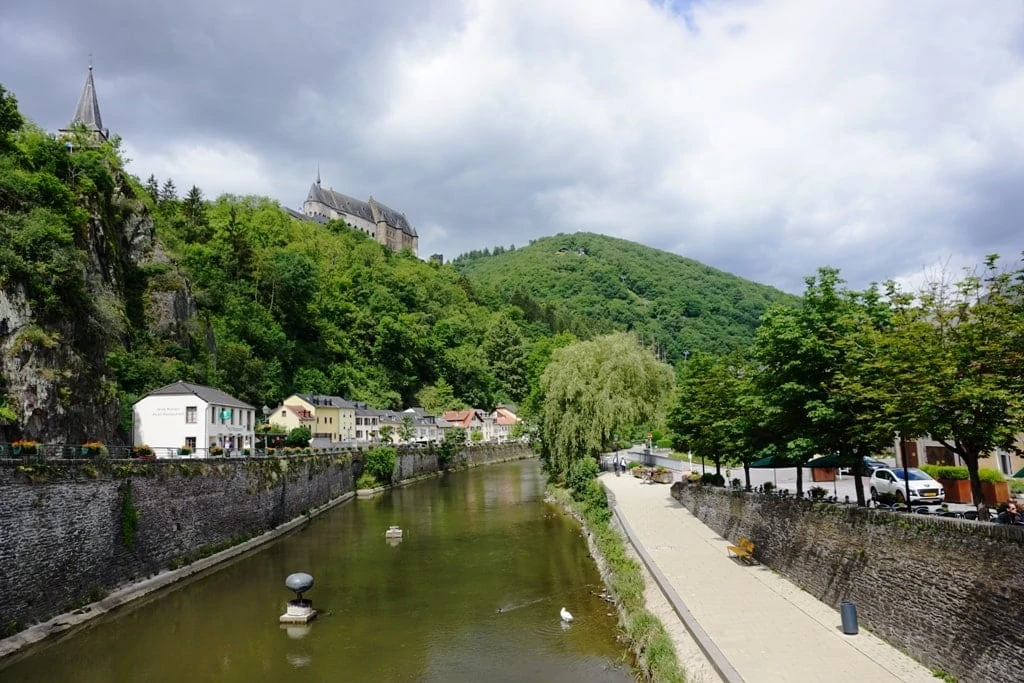
Located just 55 kilometres from Luxembourg City, visiting the castle can easily be done in a day. To get there, catch the train to Ettelbruck and then get the number 570 bus to Vianden – conveniently the bus station in Ettelbruck is right across the road from the train station. There are 77 trains per day, and buses run every 30 minutes (every hour on a Sunday), meaning there is no real need to timetable your trip.
The whole journey takes less than an hour and is free if you have a Luxembourg card – this card allows you to access 60 tourist attractions throughout Luxembourg, and also gives you free public transport across the country. One, two, or three-day cards can be purchased for 13€, 20€ and 28€ respectively.
